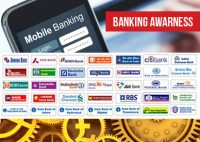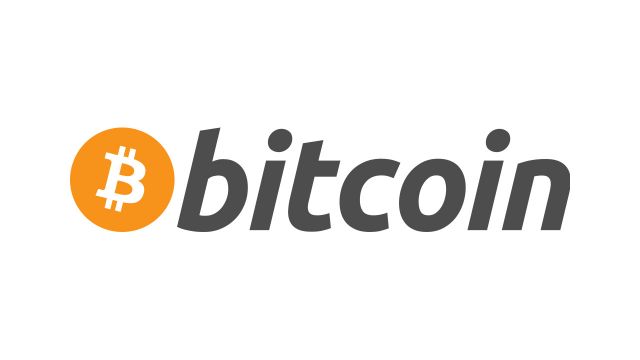IMPORTANT BANKING TERMS-ABBREVIATION PART-V
IMPORTANT BANKING TERMS-ABBREVIATION PART-V
- SFMS
Structured Financial Messaging System (SFMS) is a secure messaging standard developed to serve as a platform for intra-bank and inter-bank applications. It is an Indian standard similar to SWIFT (Society for World-wide Interbank Financial Telecommunications) which is the international messaging system used for financial messaging globally.
SFMS can be used for secure communication within the bank and between banks. The SFMS was launched on December 14, 2001 at IDRBT. It allows the definition of message structures, message formats, and authorization of the same for usage by the financial community. SFMS has a number of features and it is a modularized and web enabled software, with a flexible architecture facilitating centralized or distributed deployment.
- LAF
LAF is used to aid banks in adjusting the day to day mismatches in liquidity. LAF helps banks to quickly borrow money in case of any emergency or for adjusting in their SLR/CRR requirements. LAF consists of repo and reverse repo operations. Repo or repurchase option is a collaterised lending i.e. banks borrow money from Reserve bank of India to meet short term needs by selling securities to RBI with an agreement to repurchase the same at predetermined rate and date.
- NISM
National Securities Depository Limited (NSDL) is an Indian central securities depository based in Mumbai. It was established on 8 November 1996 as the first electronic securities depository in India with national coverage based on a suggestion by a national institution responsible for the economic development of India .
- CDSL
A Depository facilitates holding of securities in the electronic form and enables securities transactions to be processed by book entry. The Depository Participant (DP), who as an agent of the depository, offers depository services to investors. According to SEBI guidelines, financial institutions, banks, custodians, stockbrokers, etc. are eligible to act as DPs. The investor who is known as beneficial owner (BO) has to open a demat account through any DP for dematerialisation of his holdings and transferring securities.
- FCCB
A foreign currency convertible bond (FCCB) is a type of convertible bond issued in a currency different than the issuer’s domestic currency. In other words, the money being raised by the issuing company is in the form of a foreign currency. A convertible bond is a mix between a debt and equity instrument. It acts like a bond by making regular coupon and principal payments, but these bonds also give the bondholder the option to convert the bond into stock.
- RIDF
Government of India created the RIDF in NABARD in 1995-96, with an initial corpus of Rs.2,000 crore. With the allocation of Rs.25,000 crore for 2017-18 under RIDF XXIII, the cumulative allocation has reached Rs.2,92,500 crore, including Rs. 18,500 crore under Bharat Nirman.
The RIDF was set up by the Government in 1995-96 for financing ongoing rural Infrastructure projects. The Fund is maintained by the National Bank for Agriculture and Rural Development (NABARD). Domestic commercial banks contribute to the Fund to the extent of their shortfall in stipulated priority sector lending to agriculture. The main objective of the Fund is to provide loans to State Governments and State-owned corporations to enable them to complete ongoing rural infrastructure projects.
- SDR
Special drawing rights (SDR) refer to an international type of monetary reserve currency created by the International Monetary Fund (IMF) in 1969 that operates as a supplement to the existing reserves of member countries. Created in response to concerns about the limitations of gold and dollars as the sole means of settling international accounts, SDRs augment international liquidity by supplementing the standard reserve currencies.
The leading financial sector problem at present in India is NPAs of the Public Sector Banks. So far the RBI has taken several steps to tackle NPAs and one of them is the Strategic Debt Restructuring (SDR) Scheme.
- ATM
An automated teller machine (ATM) is an electronic banking outlet, which allows customers to complete basic transactions without the aid of a branch representative or teller. Anyone with a credit card or debit card can access most ATMs. The first ATM appeared in London in 1967, and in less than 50 years, ATMs spread around the globe, securing a presence in every major country and even tiny little island nations such as Kiribati and the Federated States of Micronesia.
- KYC
Know your customer (‘KYC’) is the process of a business identifying and verifying the identity of its clients. The term is also used to refer to the bank and anti-money laundering regulations which governs these activities. Know your customer processes are also employed by companies of all sizes for the purpose of ensuring their proposed agents, consultants, or distributors are anti-bribery compliant. Banks, insurers and export creditors are increasingly demanding that customers provide detailed anti-corruption due diligence information.
- LCR
The liquidity coverage ratio (LCR) refers to highly liquid assets held by financial institutions to meet short-term obligations. The ratio is a generic stress test that aims to anticipate market-wide shocks. The liquidity coverage ratio is designed to ensure financial institutions have the necessary assets on hand to ride out short-term liquidity disruptions.
- SIDBI
Small Industries Development Bank of India (SIDBI) is an independent financial institution aimed to aid the growth and development of micro, small and medium-scale enterprises (MSME) in India. Set up on April 2, 1990 through an act of parliament, it was incorporated initially as a wholly owned subsidiary of Industrial Development Bank of India. Currently the ownership is held by 34 Government of India owned / controlled institutions. Beginning as a refinancing agency to banks and state level financial institutions for their credit to small industries, it has expanded its activities, including direct credit to the SME through 100 branches in all major industrial clusters in India.
- SBN
The IFC-supported Sustainable Banking Network (SBN)’s first comprehensive Global Progress Report evaluates sustainable finance principles and policies in 34 member countries. These countries account for $42.6 trillion in bank assets—more than 85 percent of total bank assets in emerging markets. The report provides practical indicators and tools for countries to apply to their own domestic markets, regardless of their size or stage of development.
Click below for previous Abbreviation
IMPORTANT BANKING TERMS-ABBREVIATION PART-I
IMPORTANT BANKING TERMS-ABBREVIATION PART-II
IMPORTANT BANKING TERMS-ABBREVIATION PART-III
IMPORTANT BANKING TERMS-ABBREVIATION PART-IV
Click the link given below for more information:
ARTICLES
Click the link given below for Current Affairs:
DAILY CURRENT AFFAIRS






2 comments
hello sir, you didnt mention the expansion of CDSL and RIDF in above explanation
Ok. We will inform to the Concerned team. The above said explanation was given in the Abbreviation list.